“Curves are the essence of my work because they are the beauty of life itself.” –
Zaha Hadid
In the fast-paced modern world we live in, our homes have become sanctuaries – places to retreat from harsh edges and find solace in gentle, flowing forms. This season, London interior design is taking notes from the inherent softness of nature, with curved lines and organic shapes gracing furniture silhouettes, architectural details, and decor accessories.
The pioneering architect Zaha Hadid put into words the innate appeal of curvaceous design when she said her work’s essence was defined by “curves” because “they are the beauty of life itself.” Curved shapes possess an energy, a dynamism that speaks to our soul’s craving for movement and vitality. Yet they also have a softness that cultivates calm – the very purpose of creating a nurturing home environment.
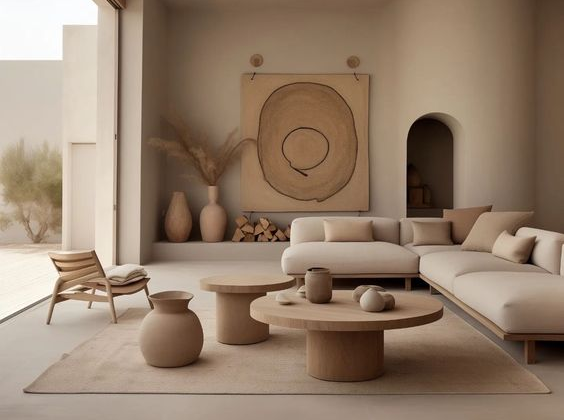
The Rise of the Curve
After years of contemporary design being dominated by sleek, linear angles and strict geometry, the pendulum is swinging towards a more feminine, inviting aesthetic. Hard lines and corners can feel harsh, uninviting and sterile, while curves bring a sense of warmth, movement, and human-centric design.
This embrace of curves isn’t just about aesthetics – it taps into principles of biophilic design aimed at reconnecting us with the natural environment in subtle yet impactful ways. By eliminating harsh angles and corners, these shapes create a calming, breathable flow as you move through a space. The soft, rounded, pebble-like forms evoke a comforting familiarity, harkening back to the organic lines and shapes found abundantly in nature.
The Science Behind Curved Design
While curved furniture and architectural elements are inherently pleasing to the eye, there’s also a neuroscience behind why these lines appeal to us on a deeper level. Neuro-scientists have discovered that curvilinear objects activate the brain’s anterior cingulate cortex and insula – areas associated with perceiving safety, pleasure and “approaching motivation.”
In other words, our brains seem to automatically recognise curves as non-threatening and desirable shapes that should be moved towards and engaged with. On a primal level, we associate the lack of harsh angles and abrupt corners with a feeling of safety.
This could be an evolutionary holdover from our hunter-gatherer days when harsh edges and jagged shapes often signaled danger or discomfort in nature. Meanwhile, smooth rivers, undulating landscapes, and round, pebble-like shapes felt inherently safe and welcoming.
So when curved lines and organic forms are integrated into our living spaces, they can create an intuitive sense of ease and comfort, almost like the interior itself is giving the subtle signal that this is a hospitable environment for relaxing.
Sculptural Serenity
From soft, spherical pendant lights that mimic droplets of water suspended in the air, to accent chairs with tulip-shaped bases, to arched entryways and barrel-vaulted ceilings, curved elements add an organic, natural perspective. Upholstered seating is eschewing rigid angles for gently sloping arms and backs that seem to envelop you. Even decor accents like free-form bowls, vases and sculptures are being rendered without a single harsh edge.
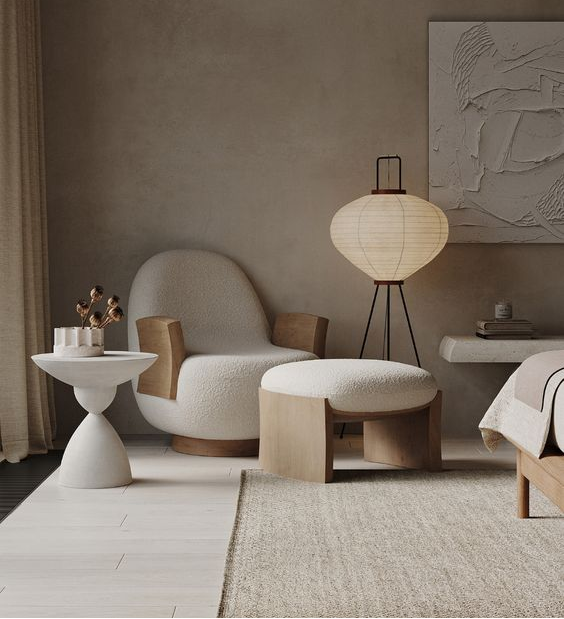
These shapes have a sculptural, artistic quality that injects serene softness into a space. The lack of harsh lines creates a soothing flow, almost like each piece was shaped by the path of a river’s current rather than forced into an angular mold. With no corners acting as visual detours for the eye, your gaze can glide effortlessly across a room’s contours.
Curved Contrast
Of course, not every architectural structure or furniture piece needs to eschew angles entirely. In many cases, a judicious blend of some crisp lines combined with more feminine curves results in the most compelling, visually-interesting spaces.
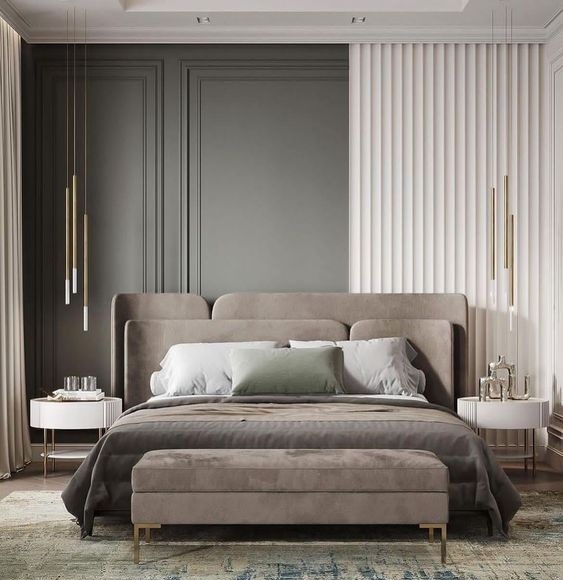
For example, in a contemporary bedroom, the architectural walls and ceiling may have a linear, minimalist aesthetic. But this blank canvas allows a luxuriously curved headboard upholstered in soft velvet to really take center stage as a showstopping focal point.
The contrast of hard and soft lines coming together heightens the impact of the gentler, organic forms while still allowing the masculine, rectilinear bones of the room to ground the overall design.
Similarly, a midcentury modern living room with low-slung sofas in a structured silhouette could pair beautifully with accent pieces like an organically-shaped side table or planters to soften the look. The straight lines provide a framework for the curved elements to shine.
Versatile Flow Across Styles
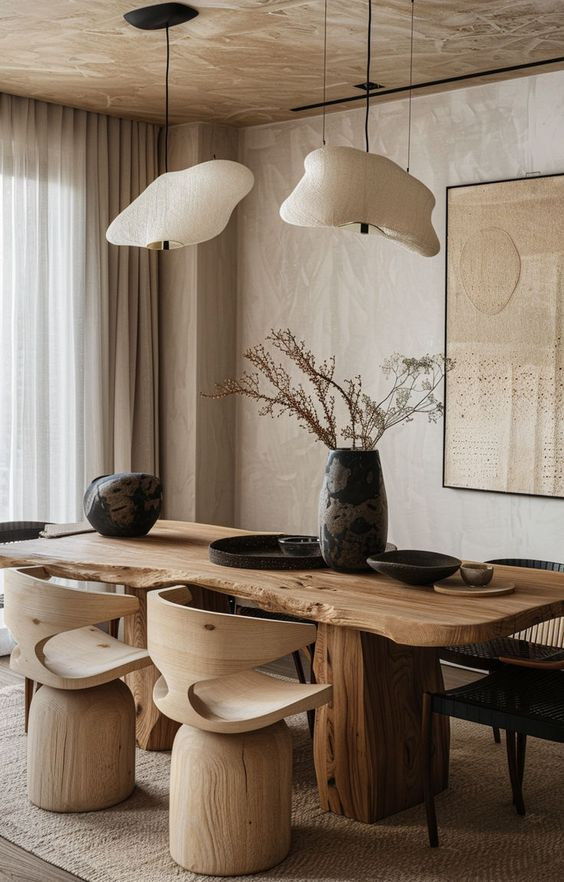
The beauty of the curved design trend is its versatility across a range of styles from mid-century inspired to minimal modern and even Japandi aesthetics. An organic- shaped dining table resonates just as beautifully in a clean Japanese-Scandinavian fusion space.
In a Japandi dining room, an organic live-edge wood table with soft, curved edges creates an elegant yet warm focal point. The flowing, asymmetrical shape is balanced by the straight lines. Curved silhouettes can work in virtually any genre by introducing a sense of softness and flow. The lack of harsh angles enhances the sense of peace and tranquility at the heart of Japandi design. Yet the dwelling silhouettes also inject subtle energy and movement into this linear, zen-inspired style.
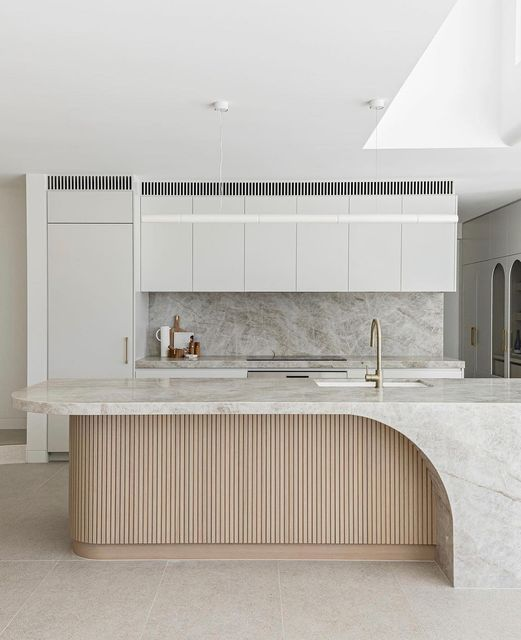
For example, a sleek curved kitchen island brings an energetic asymmetry to an otherwise minimalist, modern cooking space. The flowing curved lines add a level of sophistication and organic flair. Meanwhile, in a cozy, rustic-chic dining room, the curvaceous silhouettes of an oval wood table and rounded chair backs cultivate an enveloping, welcoming atmosphere.
This fluidity across aesthetics is key to curved design’s longevity as a trend. Since it doesn’t subscribe to any one particular style, it can act more as an enduring design principle that introduces balance and beauty through shapely, non-harsh lines.
In the same way that curves exist universally in nature, they have a place in most interior environments, complementing both masculine and feminine, modern and traditional sensibilities. Curves transcend any particular design vocabulary while enhancing the human experience through their innate warmth and elegance.
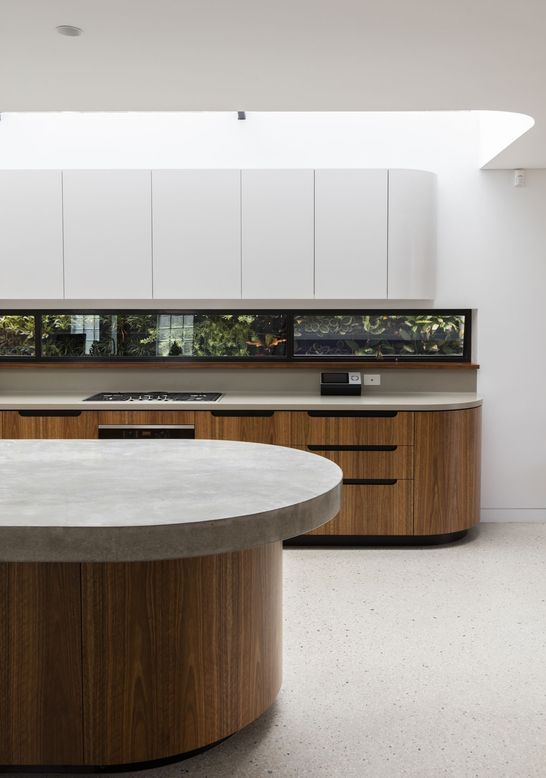
Bringing Curves Into Your Home
Some great curved design pieces to consider:
- A curved velvet sofa with sloping arms and back
- Accent chairs with rounded, tulip-shaped bases
- A sculptural woven pendant light mimicking the shape of a raindrop
- An oval dining table with soft, tactile edges and organic curves
- Decor accents like pottery, vases or bowls with free-flowing, asymmetrical silhouettes
Using design elements with softened edges and organic shapes, even in small doses, can work wonders in making your space feel more inviting, serene and restorative. Don’t be afraid to mix these more feminine, flowing forms with other smooth, straight lines for a sense of balance.
With a little inspiration from the natural world, interiors can be utterly modern yet grounded in authenticity and comfort. Embrace the power of curves to transform your home into a true personal sanctuary, just as Zaha Hadid did in her boundary-pushing designs. What could be more enveloping and life-affirming than that?
The curved trend allows us to surround ourselves with design that awakens the senses while calming the spirit. Gentle, shapely forms are like aesthetic sustenance for the soul. So indulge your deepest craving for undulating lines, and let the atmosphere of your home become as energizing yet soothing as the curves found in nature herself, with Oraanj Interior Design leading the way.
